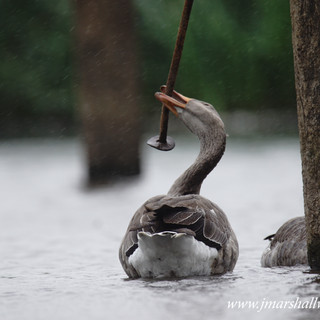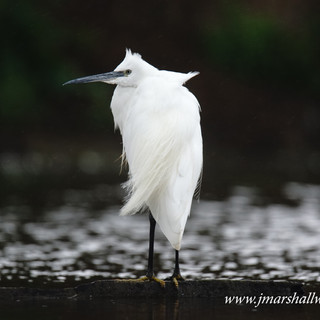SUPER SNIPES @ TOPHILL LOW NATURE RESERVE
- Jonathan Marshall
- Aug 22, 2019
- 6 min read

On Thursday 22nd August I headed east and visited Tophill Low Nature Reserve. Tophill Low is situated off the A164, a couple of miles east of the village of Watton between Driffield and Beverley in East Yorkshire. It is like Rodley Nature Reserve in set up as it has a water treatment works run by Yorkshire Water within the reserve, however this water treatment works is considerably bigger than the one at Rodley.
Tophill Low opened as a nature reserve in 1993 and has twelve hides, with seven of them being wheelchair accessible, across the three-hundred-acre site. The River Hull borders the eastern edge of the reserve and the two large 'D' and 'O' shaped reservoirs which have an SSSI status due to the very large number of wildfowl that can be found on the reservoirs. It was a warm but cloudy day when I arrived, and I headed across to the warden’s office to become a member and obtain access to the photography hide which was opened earlier this year.
From here I headed up the boardwalk to the Reception Hide which looks out over D Reservoir and on the water I could see around a hundred Coots and a dozen Great Crested Grebes. On the feeders just to the right of the hide were Blue Tits, Goldfinches, Chaffinches, Greenfinches and a lone Tree Sparrow. I left the hide and headed along the path through the woods towards the North Marsh Hide. The path winds through the trees, briefly returning to the edge of the reservoir before turning back into the woods and after a couple of hundred yards brings you to a small pond with some feeders at the far end.
There were a couple of Great Tits on the feeders and a Wren calling from the bushes below. Just beyond the feeders the path splits in two with the left-hand path taking you to the northern end of the reservoir and then Hempholme Meadow whilst the righthand path takes you to the North Marsh Hide. I took the right-hand path and walked the short distance to the hide where, soon after I arrived, I heard the call of the Kingfisher. It came into view and flew low along the edge of the reeds before landing on a branch around thirty to forty yards away.

It was a female Kingfisher and it made one dive into the water before briefly returning to the perch and then flying off northwards over the reeds. I waited more than half an hour to see if the Kingfisher would return but it did not, so I headed back along the path towards the Reception Hide. I followed the path past the Reception Hide towards the North Lagoon Hide and as I walked along the path, I saw a couple of Wrens moving along the tops of the bushes before disappearing.
From the North Lagoon Hide I could see a few Mallards, a Moorhen and a Little Grebe with a single chick in tow. At the far side of the lagoon is the bank of the River Hull and flying along from right to left I saw a Little Egret with a trio of Buzzards soaring high overhead. I left the hide and walked along the path towards the South Lagoon and from here the path eventually brings you out at the south west corner of the Lagoon. Before heading to the photography hide, I turned off the path and walked the short distance across to the South Lagoon Hide.
On the water were several Gadwalls with a few Sand Martins flying overhead and after a couple of minutes a Little Grebe swam out from the right-hand side and began diving for food about fifty yards from the hide. It spent several minutes doing this and just before I left the hide, I spotted another Little Grebe asleep on a nest over towards the right-hand edge of the lagoon. I walked along the path round the O reservoir towards the photography hide where I saw several Red Admiral butterflies flying over the grass and bushes.

About a quarter of the way around the O reservoir I turned to the left and headed towards a hide which looks out over the South Marsh. Just before you reach the hide a path splits off to the left and descends towards the water level and the photography hide which is called the Izzard Hide. In front of me I could see a Black Tailed Godwit, Greenshanks, Green Sandpipers and a few Snipes. There were also several Greylag Geese and a single Little Egret sat on a log busy preening itself whilst over to the right were several more Snipes and a pair of Teals.
One of the Snipes to my right walked a little closer to me along a shallow mud bank before pausing briefly and then flying the short distance across to a log in front of the hide. On the water and islands to the far right of the hide were several Greylag Geese, Lapwings, Black Headed Gulls and a trio of Little Egrets. Back in front of the hide, one of the Green Sandpipers now waded through the shallow water towards the hide and a short time later two of the Snipes followed suit.

At the far side of the water a Greenshank landed with its back to me before turning around and weaving its way from side to side towards me. A second Greenshank landed to my right and walked across a small mud bank and then swam across a short expanse of water towards the other Greenshank before walking across towards it and they then both flew off across the water to the right of the hide. A brief rain shower now swept through and as it stopped a Marsh Harrier flew over the top scattering all the waders and the Gulls and Lapwings flew up and tried to chase it off when it reached them.
The Black Tailed Godwit returned briefly but flew off when the two Greenshanks returned along with another Little Egret. This caught the attention of the other Little Egret as it stopped preening itself and waded across the water towards the other Little Egret. The pair of Egrets proceeded to call and stare at each other from either side of a large wooden post which rose around six feet out of the water. They spent several minutes moving round this post, occasionally darting their long black beak at each other, before the invading Egret flew off.
As another rain shower swept threw, around twenty Snipes flew in and landed around a hundred yards to my right. A few of the Snipes made their way over towards the hide, eventually arriving at the mud bank to the right of the hide as the rain got heavier. Two more Snipes flew over and landed right in front of me and after a few minutes the rain stopped, and the sun started to break through the clouds. A few Greylag Geese swam across to the large wooden post with one of them biting at a long steel rod which was protruding from it.

The Snipes and Green Sandpipers now came very close to the front of the hide and as it started to rain yet again, they made their way towards the far side of the water. The rather feisty Little Egret had returned to its preening perch but as another Little Egret landed it flew over and after a brief tête-à-tête it chased the its rival off. Victorious it flew across and landed on top of a wooden post looking around to check if any more Egrets had invaded its territory. Another Little Egret landed a few minutes later and once again the territorial Egret flew across to the interloper and after a brief stare off the unwelcome guest departed.
One of the Greenshanks now made another pass right in front of the hide and at one point stared at the hide before wading away across the water and behind a log over to the left. The resident Egret now landed on a thin wooden post, struggling to keep its balance before returning to its watchpoint on the log. The Greenshank now reappeared and climbed up onto a large log laid flat in the water and proceeded to walk along it, pausing briefly at the end before flying off.

A male Kingfisher flew over the reeds at the far side of the water and landed on a branch at the top of a steep mud bank about fifteen feet above the water. It spent the next few minutes diving into the water and returning to perches on the far bank. Eventually it flew across and landed on one of the wooden posts around thirty feet from the hide. It moved to a post slightly closer and after one dive it flew off across the front of the hide and out of sight. I had now been in the photography hide for around 2 hours and after another brief, but heavy, rain shower I left the hide.
As I returned to the path round O reservoir a group of Wrens flew out from a tree with one perching briefly before flying off. I now followed the paths all the way back to the Reception Hide where the feeders were still busy with Goldfinches, Greenfinches, Chaffinches, Blue Tits and again a s single Tree Sparrow. I now headed down the boardwalk back to my car as Wrens called from the bushes and I headed home.
I have attached a few photos and a full sightings list from my visit to Tophill Low Nature Reserve.
























































































































































































































































































Comments